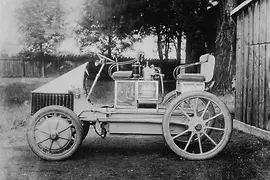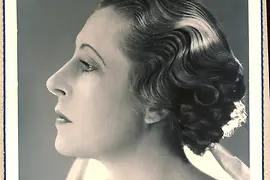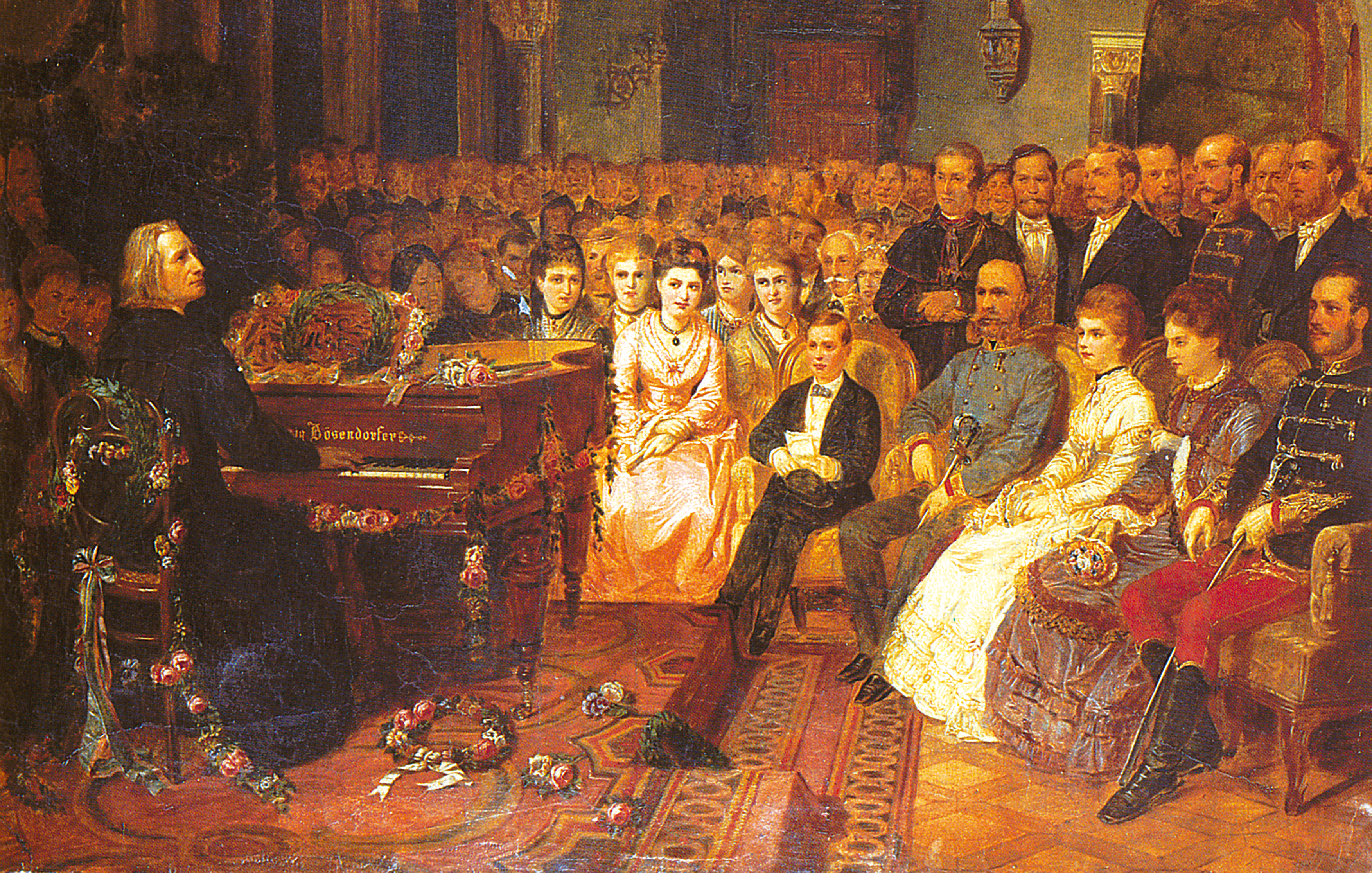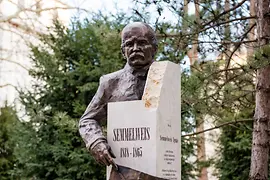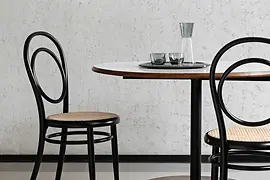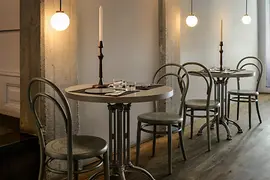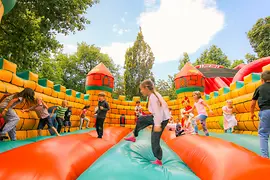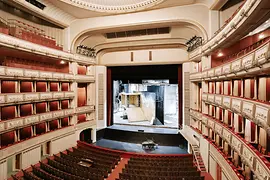Vienna Media News 03/2022 Ten Viennese Inventions That Went on to Take the World by Storm
The First Electric Car
Who would have thought it? The world’s first electric car was invented right here in Vienna – more than one hundred years ago. In 1899, coachmaker Ludwig Lohner and automotive engineer Ferdinand Porsche produced the first electric car for the Vienna-based Lohner Werke company. A year later, this breakthrough piece of engineering was unveiled at the World Expo in Paris. The first hybrid vehicle followed in 1900. The reasons behind the invention were similar to those behind the push for electric vehicles today: Lohner believed that the air would be “inexorably damaged by increasing numbers of petrol engines”. And for some time, it seemed like the electric engine and not the internal combustion engine would come out in front. However, crippling development costs and a legal dispute over patents spelled the end for Vienna’s Lohner-Porsche vehicle just a few years later. www.lohner.at
The First Indoor Ski Slope
The world’s first indoor ski slope was also a Viennese invention. In 1927, the Schneepalast opened in the arrivals hall of the capital’s disused Nordwestbahnhof station, to become the first indoor winter sports arena the world had ever seen. The artificial snow was created using a combination of washing soda, sawdust and water. With two slopes, a toboggan run and a ski jumping hill for competition jumpers, it was the big attraction in Vienna when it opened in 1927. After the initial surge in interest, the Schneepalast was forced to close after not even a year, not least due to reports in the media of patrons facing breathing difficulties and skin irritation due to the soda. Internationally, the popularity of indoor winter sports arenas accelerated in the 1930s and never looked back.
The First Waterproof Mascara
The world’s first waterproof mascara was also invented in the Austrian capital – out of necessity. Helene Winterstein Kambersky was a celebrated singer in 1920s Vienna. Her eye make-up would start to run under the glare of the hot stage lighting. Working with her brother, a chemist, she started to experiment with various formulations in her kitchen before eventually coming up with the world’s first waterproof mascara in the 1930s. Helene Winterstein Kambersky, who relied on a wheelchair due to an earlier case of lead poisoning, went on to found her own company in 1936. Called Nussy, this revolutionary product was inspired by her stage name. The patented original mascara tubes are still available from Helene Cosmetics Company, which remains under family ownership to this day. https://helenewinterstein.com
Proper Handwashing
These days, tips on handwashing and correct hand hygiene can be found at every turn – echoing a theory first posited in Vienna. But despite revolutionizing medicine with this advance, some of the ideas of Ignaz Semmelweis proved to be far ahead of his time. Semmelweis came to Vienna from Hungary in the middle of the nineteenth century, where he worked at the capital’s General Hospital. Looking at the delivery rooms which were supervised by doctors, Semmelweis saw that disproportionate numbers of mothers were succumbing to postpartum infections. By contrast, far fewer were falling ill on the wards where they were under the care of midwives. He spotted the connection and noted that the doctors were transferring bacteria from the operating theaters directly to their patients due to a lack of handwashing. To this day, Semmelweis is feted as the “savior of the mothers”. His findings, however, met with derision from the medical fraternity. Facing increasing hostility, he was dismissed as a charlatan, which triggered a supposed nervous breakdown. He died at the Lower Austrian state mental hospital in Döbling, Vienna under circumstances that have never been fully explained. Today, the medical community has much to thank Semmelweis for and his reputation has been fully restored. www.wien.info/en/all-of-vienna/semmelweis-358038
Psychoanalysis
Another physician revolutionized the world from Vienna: in 1899, Sigmund Freud published his epochal work The Interpretation of Dreams, laying the foundations of psychoanalysis. Berggasse 19 in Vienna’s ninth district – the location of his private apartments and practice – would be the center of Freud’s life for 47 years. Dubbed the Birthplace of Psychology, today it is home to the Sigmund Freud Museum. His successes as a practitioner and his scientific publications brought this physician, psychoanalyst and theorist fame far beyond Austria’s borders. He shaped a new and revolutionary image of humanity. While Freud’s international reputation continued to grow, the Nazis burned his books. In 1938, at the age of 82, Freud felt he had no choice but to leave Vienna, emigrating to London with his family. Just under a year later, suffering from incurable cancer, he took an overdose of morphine with the help of his personal physician. freud.vienna.info
The First Eight-Octave Concert Grand Piano
The world capital of music also plays a pioneering role when it comes to instrument making, having brought a number of unparalleled creations to market over the years, with the Bösendorfer piano manufactory leading the way. Established more than 200 years ago, it is not only the oldest premium-segment maker, but is also synonymous with a unique sound that is prized by aficionados the world over. Each year Bösendorfer handcrafts 300 of these legendary instruments. In 1900, the company caused a sensation when it built the first concert grand with an acoustic range covering a full eight octaves. Even now, Ludwig Bösendorfer’s Imperial represents the pinnacle of the piano maker’s art and epitomizes the company’s musical legacy. The most talented pianists play Bösendorfers – from Duke Ellington to Oscar Peterson, from the Beatles to Bernstein, from Liszt to Gulda, and from Michael Jackson to Tori Amos. The Vienna showroom – the Bösendorfer Salon and Flagship Store – is located in the Musikverein building, where the city’s musical heart beats. www.boesendorfer.com
The First Opera Glasses
It is hardly a coincidence that opera glasses were invented in the world capital of music. In 1823, Friedrich Voigtländer came up with the first two-lens solution for operagoers in Vienna and was promptly awarded the Imperial concession to manufacture his invention. Up until this point, theater and opera audiences had had to rely on simple single-eye scopes. These ingenious, pocket-sized visual aids are still in use today.
The First Mass-Produced Chair
Thonet’s Viennese coffeehouse chair is the best-known example of Viennese furniture design, and ranks among the most-produced items of seating furniture in history. Invented by Michael Thonet in 1860, Model No. 14 is a success story that kick-started the era of mass furniture making. His new, modular manufacturing method made industrial production a viable possibility for the first time. And the chairs themselves – now sold as Model No. 214 – could be packed flat in just six pieces ready for delivery to addresses all around the world. Michael Thonet’s pioneering use of steam to bend solid wood revolutionized the world of furniture production. Born in the Rheinland in Germany, he set up his own workshop in Vienna in 1849. But it was not long before he transferred production to Moravia, where wood and cheap labor were in plentiful supply. The Gebrüder Thonet workshops were transformed into an internationally-respected industrial company which still had its roots in Vienna. www.gebruederthonetvienna.com
Inflatable Bouncy Castle
Children everywhere love bouncy castles – a product that found its way out into the world from Vienna. Elisabeth Kolarik not only owns several restaurants in Vienna’s Prater park, but is also credited as inventing the bouncy castle, or, as she called it the Luftburg, in 1977. Originally, she was looking for a little inflatable mattress in the shape of a castle for her daughter to jump about on. A mix up with the dimensions meant that she ended up receiving a giant version instead. Bouncy castle hire and sales would soon come to become a mainstay of her business. Child-friendly restaurants popped up in the Prater, where her invention could also be found – chief among them Kolarik’s Luftburg, which is celebrating its 30th anniversary this year. https://kolarik.at
The Viennoiserie
In the German-speaking world, the word “Viennoiserie” is virtually unheard of. But in countries such as France, the UK and the USA it is a blanket term used to refer to “Things from Vienna” and, more specifically, fantastic pastries. And with good reason: it was from Vienna that the croissant went on to conquer the world. In the nineteenth century, Vienna had an outstanding reputation as far as cakes and pastries were concerned. Bakers from all over the world came to the city to learn their trade. And a number of prominent Viennese bakers shared their expertise abroad. Including August Zang, who relocated to Paris in 1838, where he helped spread the popularity of the Kipferl and Viennese baked goods. Maison Zang quickly established itself as the apotheosis of Viennese baking, and Zang made a fortune. It was in Paris that the original shortcrust Kipferl would be tweaked to create the croissant of today. The Viennese bakery scene is currently enjoying a renaissance thanks to a fresh batch of contemporary artisan bakeries such as Joseph Brot. www.joseph.co.at
Visit celebrate.vienna.info for the lowdown on the Celebrate Life. Experience Vienna. focus year in 2022.
Contact
Vienna Tourist Board
Helena Hartlauer
Media Relations
Tel. (+ 43 1) 211 14-364
helena.hartlauer@vienna.info

